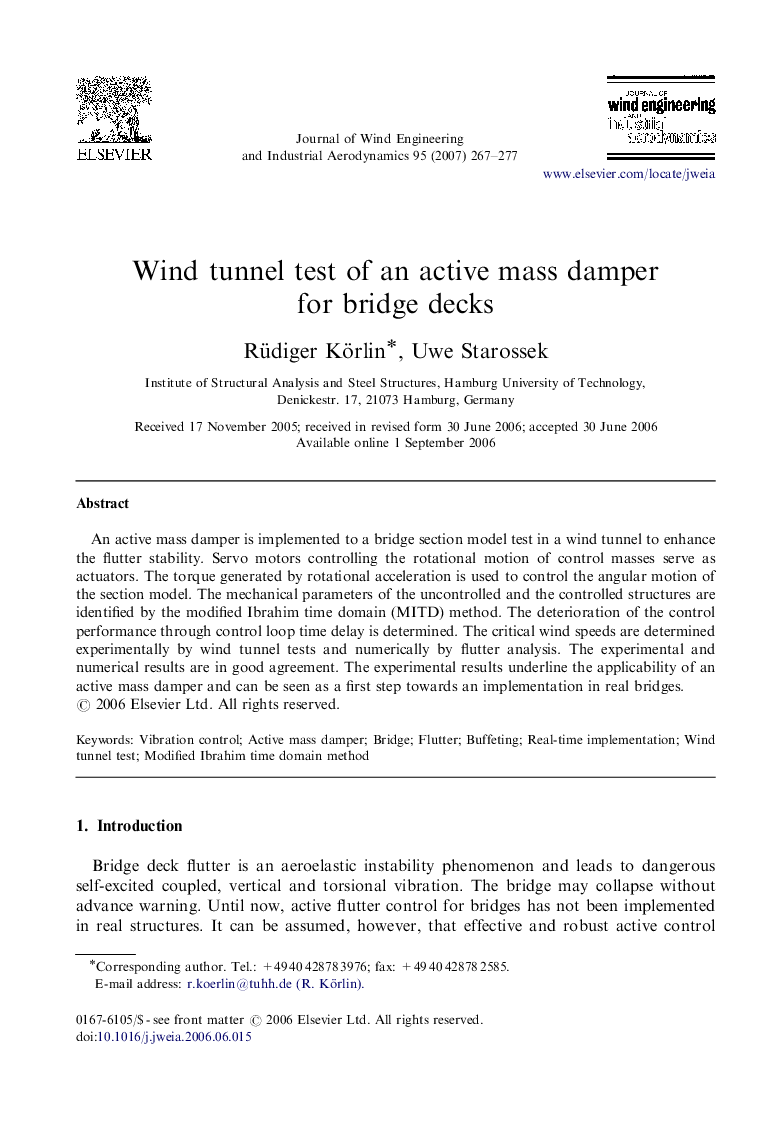| Article ID | Journal | Published Year | Pages | File Type |
|---|---|---|---|---|
| 292648 | Journal of Wind Engineering and Industrial Aerodynamics | 2007 | 11 Pages |
An active mass damper is implemented to a bridge section model test in a wind tunnel to enhance the flutter stability. Servo motors controlling the rotational motion of control masses serve as actuators. The torque generated by rotational acceleration is used to control the angular motion of the section model. The mechanical parameters of the uncontrolled and the controlled structures are identified by the modified Ibrahim time domain (MITD) method. The deterioration of the control performance through control loop time delay is determined. The critical wind speeds are determined experimentally by wind tunnel tests and numerically by flutter analysis. The experimental and numerical results are in good agreement. The experimental results underline the applicability of an active mass damper and can be seen as a first step towards an implementation in real bridges.
